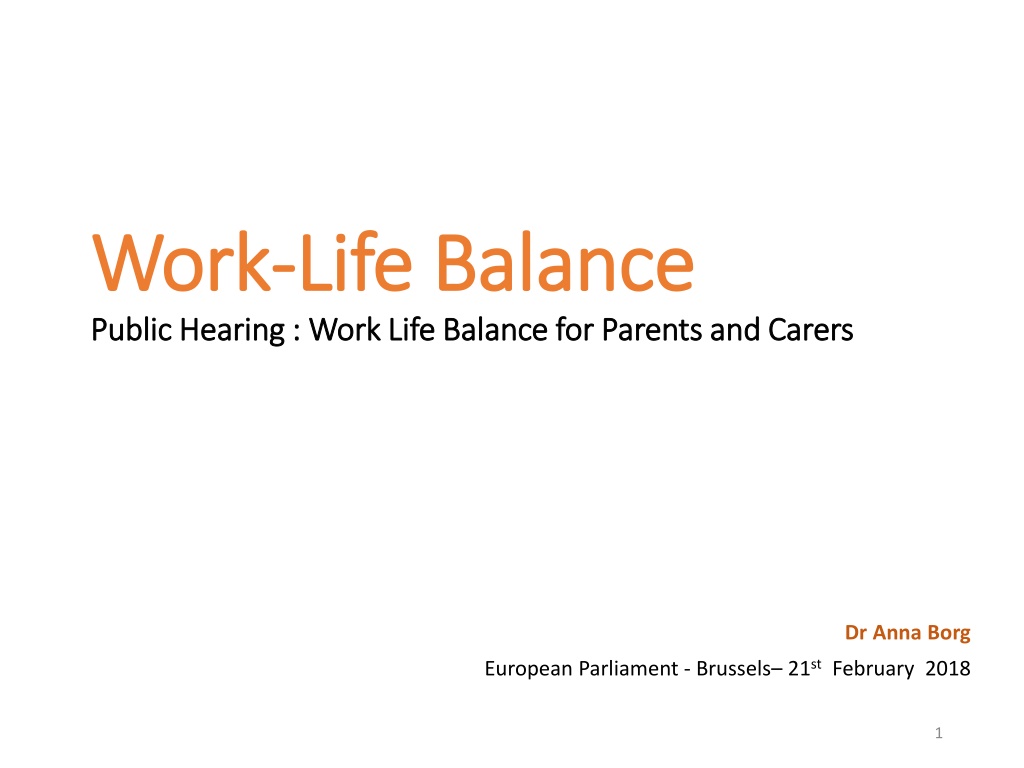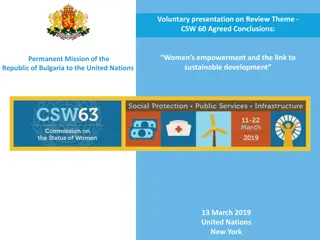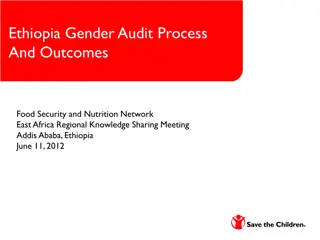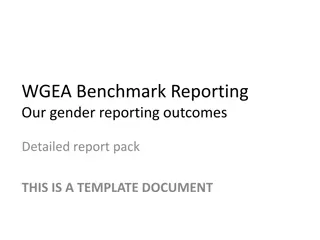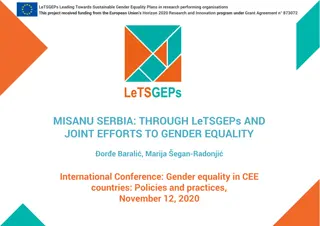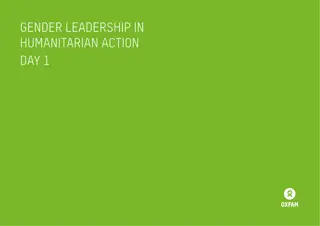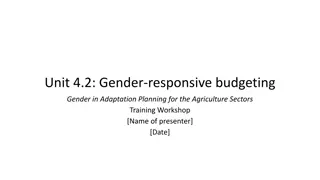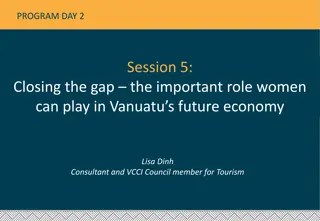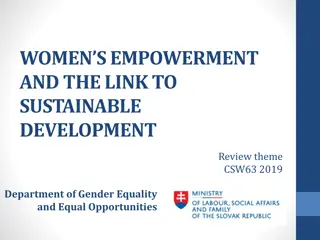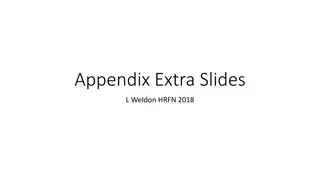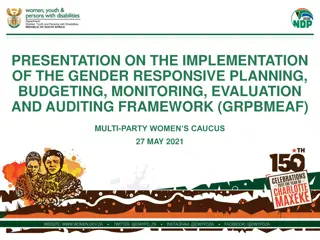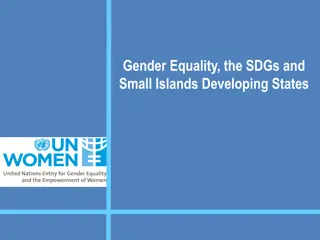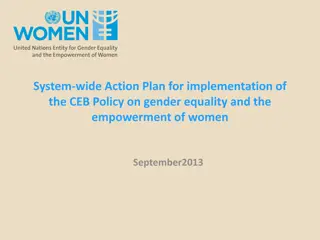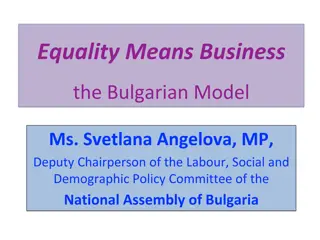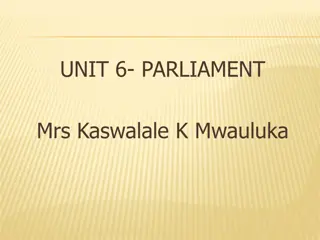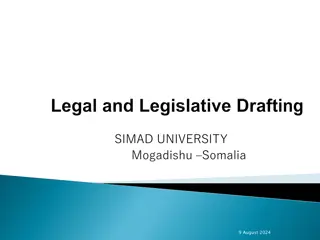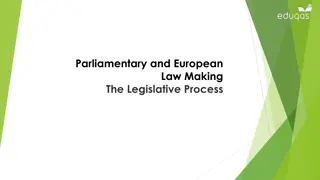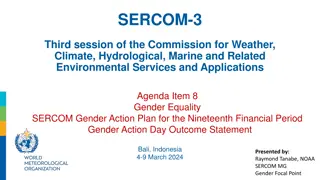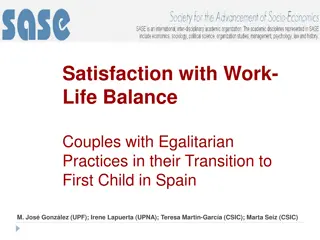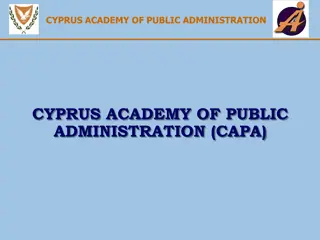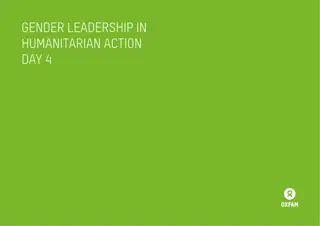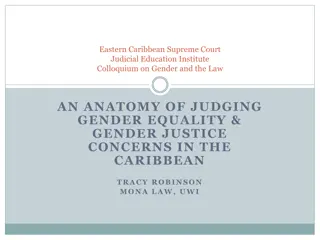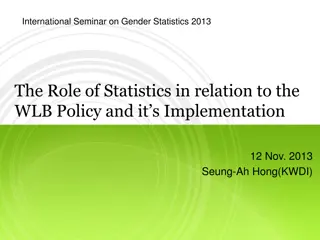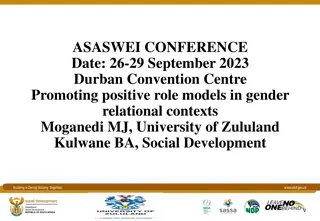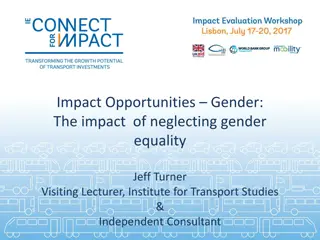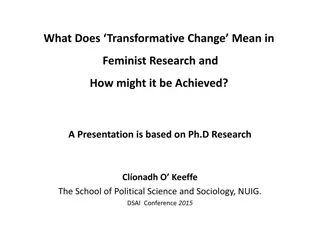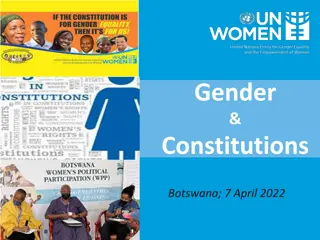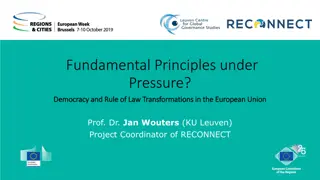Enhancing Work-Life Balance: Proposals for Gender Equality in the European Parliament
The public hearing in the European Parliament on work-life balance for parents and carers, led by Dr. Anna Borg, focused on analyzing proposals to improve gender equality by balancing work and family responsibilities. The discussion highlighted the need to remove inequalities and promote shared caring responsibilities between men and women. Emphasizing the importance of EU legislation, the presentation addressed the challenges and implications of introducing 10 working days of paternity leave paid at sick pay level.
Download Presentation

Please find below an Image/Link to download the presentation.
The content on the website is provided AS IS for your information and personal use only. It may not be sold, licensed, or shared on other websites without obtaining consent from the author. Download presentation by click this link. If you encounter any issues during the download, it is possible that the publisher has removed the file from their server.
E N D
Presentation Transcript
Work Work- -Life Balance Life Balance Public Hearing : Work Life Balance for Parents and Carers Public Hearing : Work Life Balance for Parents and Carers Dr Anna Borg European Parliament - Brussels 21st February 2018 1
Aim of Presentation Aim of Presentation 1. To analyse the current proposals being put forward to enhance work-life balance. 2. To analyse if these are sufficient to eradicate some of the deep-rooted inequalities that still persist between women and men in relation to paid/unpaid work and the uptake of family related leaves. 3. To give recommendations on removing inequalities. 2
A Much Needed Two A Much Needed Two- -Pronged Approach Approach Pronged These proposals are meant to: 1. Enable people with caring responsibilities to better balance their work with family commitments. 2. Encourage a better sharing of caring responsibilities between women and men thus enhancing gender equality. This is one of the most important pieces of EU legislation. It is imperative that we get it right. 3
The Norm/Deviant Gendered Lens The Norm/Deviant Gendered Lens Needed to Asses the Proposals Needed to Asses the Proposals Organisations are NOT gender neutral (Acker, 1990) Organisations build on masculine norms which assume that the ideal worker is an unencumbered man who typically favours paid work over unpaid family-related work. This gendered process renders unencumbered men as the NORM, whilst mothers with caring responsibilities are considered to be DEVIANTS in the eyes of the employers. These gendered values hugely affect the uptake of Family Related Leaves (Lewis, S., Gambles, R., & Rapoport, R., 2007; Rapoport, R., Bailyn, L., Fletcher, J., & Pruitt, B., 2001) . Hence, the Norm/Deviant gendered lens will be adopted to analyse these proposals. 4
Introduction of 10 Working Days of Introduction of 10 Working Days of Paternity Leave Paternity Leave paid at paid at Sick Pay Level Sick Pay Level Paternity leave is much needed and it is good that the focus is on the father 5
10 Working Days of Paternity Leave 10 Working Days of Paternity Leave paid at paid at Sick Pay Level Sick Pay Level - - Implications Implications Why is there a disparity of approximately 12 weeks between maternity (14 weeks) and paternity leave (10 days)? What are the implications of this proposal? Where does this place mothers/fathers in the eyes of their employers? Can we ever contemplate equality of rights between women and men without equality of responsibilities? 6
4 months non 4 months non- -transferable Parental transferable Parental Leave paid Leave paid at Sick Pay Level at Sick Pay Level It is positive that Parental Leave will now be: Non-transferable. Available more flexibly until children are 12 years of age, instead of 8 years. Compensated, but 7
4 Months Parental Leave 4 Months Parental Leave paid at at Sick Pay Level at Sick Pay Level - - Implications paid at Least Least Implications Alarm bells sound when noting that parental leave will be paid at sick pay level. Sick pay levels/conditions vary widely across the EU and replacement rates of compulsory sick pay vary from 25% (SK) to 100% (BE, FI) 2. What does this mean exactly? Fathers are unlikely to consider parental leave if there is a reduction in their income at a time when the family has seen costs spike1. If fathers are discouraged from taking up parental leave, the caring gap will not be closed. Mothers will continue to be seen in a negative light in the eyes of employers (the motherhood penalty) 3. 1. 2. 3. Eurofound, 2016; Van Belle, J., 2016; Moss, P. , 2015 Sick pay and sickness benefit schemes in the European Union, 2016 Webber, G., & Williams, C., 2008; Correll, S., & Benard, S., 2007
4 Months Parental Leave 4 Months Parental Leave paid at at Sick Pay Level at Sick Pay Level - - Implications paid at Least Least Implications Fathers, like mothers on parental leave, are not sick so why pay both of them at sick pay level? Why impose a parental penalty when these parents are bringing up the next generation of citizens? The next generation of employees? The next generation of consumers? The next generation of carers? Is this the best Europe can offer to young families when birth rates are plummeting and the elderly population is increasing? 9
5 Days Carers 5 Days Carers Leave paid at least at Leave paid at least at Sick Pay Levels Sick Pay Levels It is positive that carers are being acknowledged for the unpaid work they do. 5 days is a good start, but the compensation at sick pay level is again likely to attract more women than men. Do we risk reinforcing gender stereotypes and buttressing the notion of the Ideal Worker? 10
Right to Request Flexible Work Right to Request Flexible Work Arrangements (FWAs) Arrangements (FWAs) It is a much needed and timely move to give workers the right to request FWAs it gives temporal and spatial flexibility to working parents. But why is it tied to working parents of children up to 12 and carers with dependent relatives? Everyone is facing work-life challenges. This creates us-and- them problems and raises issues of fairness between workers. Limiting FWAs to parents and carers may reinforce gender stereotypes as more women than men are likely to opt for a reduction of working hours. 11
Recommendations Recommendations The separate quota for parental leave should be maintained and offered on a use-it-or-lose-it basis. At present 90% of fathers across the EU DO NOT make use of parental leave. In order to encourage more fathers to take up Paternity and Parental Leave, the compensation level must be high (at, or as close as possible to, 100%). Parenting penalties in the form of income reductions should be removed. It is imperative that the EU makes it clear that costs will NOT be borne by employers and that they will be well supported throughout this process. It should also be made amply clear that the money will come from the State or National Insurance Schemes and not from employers. The right to ask for temporal and spatial flexibility should not be tied to parenting and care but should be open to all workers in order to avoid care stigmas. The EU should embark on sustained and wide ranging educational campaigns on the benefits of shared parenting to parents, employers and society at large. 12
A Brave and Bold Approach is Essential A Brave and Bold Approach is Essential More equality of rights and equality of responsibilities between women and men brings clear economic and social benefits. These have a direct positive impact on the GDP of the country and hence on business and on the European economy1. Europe should be a beacon of light in these turbulent times and should continue to push for positive change that enhances families and reduces inequalities between its citizens. We need to be brave and bold and give workers, employers and Europe the best work-life deal we possibly can. Only that will do in these challenging times. 1. DG EAC, 2016; L fstr m, ., 2015; M rtvik, R., Sp nt, R., 2005
Thank You Thank You anna.borg@um.edu.mt 14
